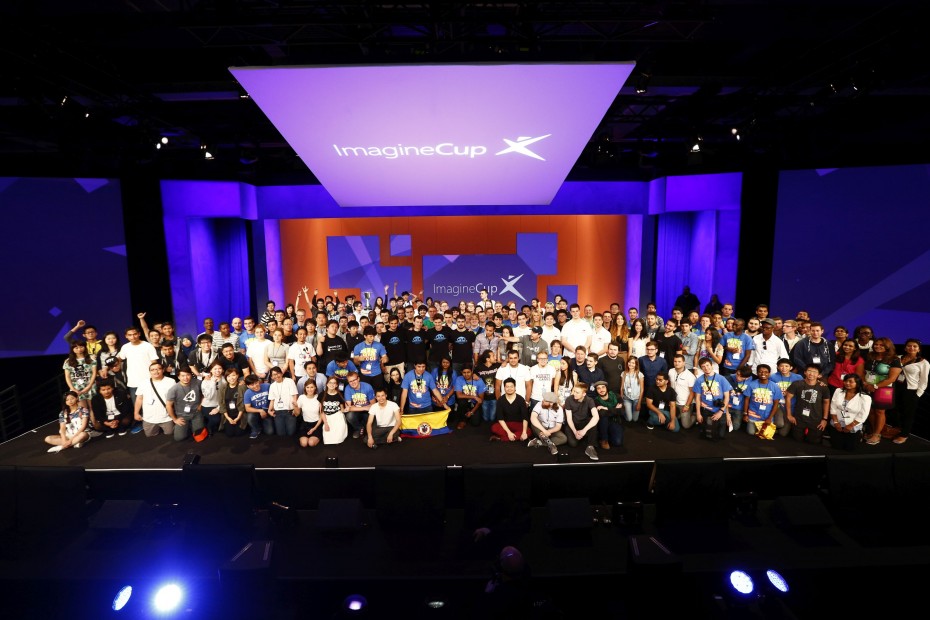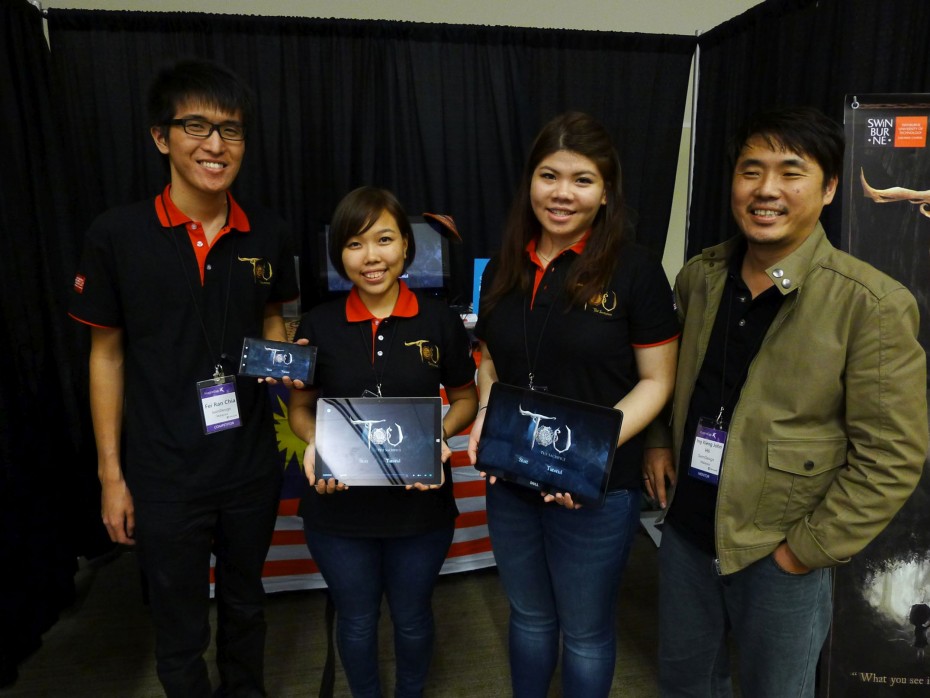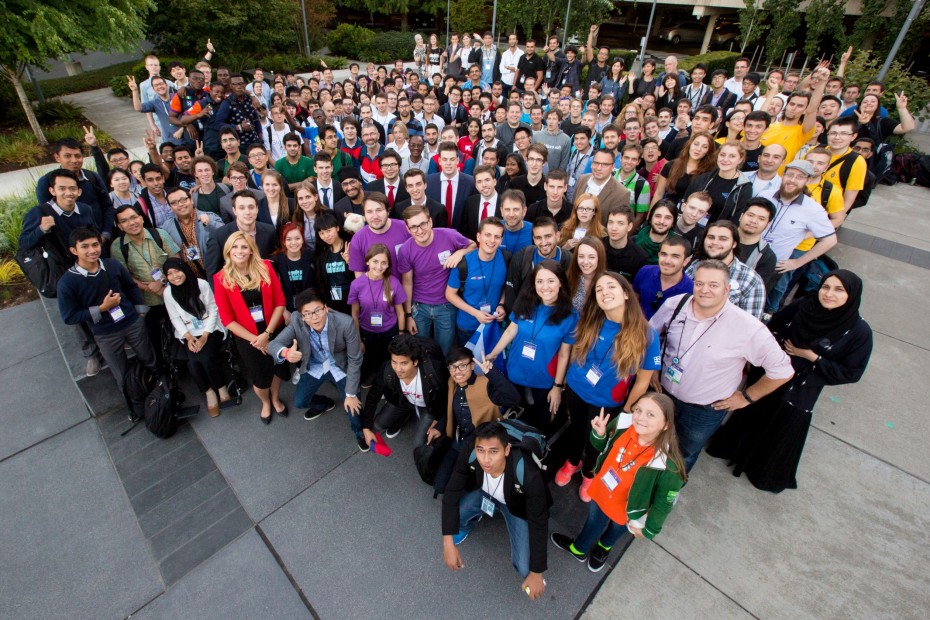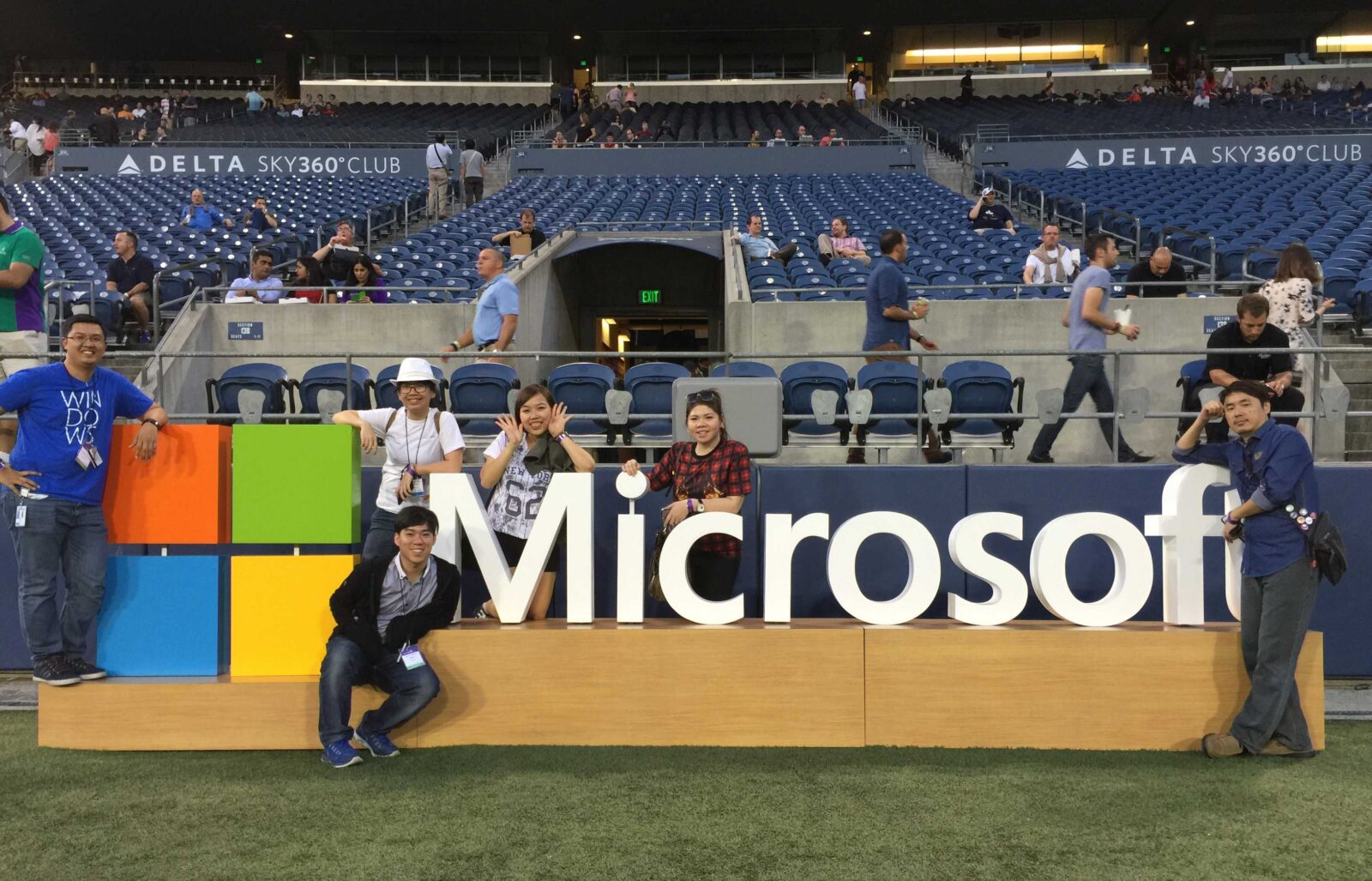By ANDREW SIA
alltherage@thestar.com.my
STELLA Wang remembers having a special “eye” to see “spirits” when she was younger. Little did the Sarawakian know, her inside knowledge of the supernatural would one day lead her to one of the world’s top student competitions for computer programmers.
She was part of the SwinDesign team that designed a game based on its members’ knowledge of Sarawakian folklore, and it landed them a place at the prestigious Microsoft Imagine Cup World Finals.
The team trumped a huge global field to make it there. Some 330,000 students in 100 countries had submitted projects at country level for the competition, of which only 150 teams were selected for the semifinals.

Teams got to experience what it’s like to be at the Microsoft Campus, and it was perfect timing because it was the company’s annual One Week, and also the launch of Microsoft 10.
The 33 that were selected for the World Finals were then flown to the Microsoft Campus, just outside Seattle, the United States, in late July to present their projects.
SwinDesign’s project was a horror “role playing” computer game which involved offering young maidens’ lives to soothe angry spirits.
Called Tou: The Sacrifice, it was inspired by ancient rituals of the Melanau people of Sarawak, with a storyline including evil bomoh (who behead themselves to gain powers), cursed villages and The Bilum – a wooden statue (possessed by spirits) that the Melanau believe gives powers to whoever touches it (www.facebook.com/TouTheSacrifice).
The four creators, multimedia design students Landon Chia, Stella Wang and Sim Jia Ying, are all from the Swinburne University of Technology (Sarawak Campus), hence the team name, SwinDesign. They were guided by their lecturer John Hii.
But could they perform on the world stage, while jet lagged? At 8am, on the very first day of competition, they were the first team to make their presentation to the judges.
Some nervousness showed on their young faces. But their well-rehearsed, if slightly stiff, 10-minute presentation of the game went off without a hitch before the panel of judges. That was just the first stage. After that, they had to set up a booth in a “bazaar” when judges (and other visitors) could try out their game.
- Related story: Global tailors

The Garage is a space where Microsoft employees can do creative projects outside their normal job scopes!
Festive time
It was a great time to be at the Microsoft Campus. Windows 10 was being launched and it was the company’s annual One Week, where thousands of employees could take part in different seminars and events to get their creative juices flowing. This included a 3,000 employee-strong hackathon.
All visitors could immerse themselves in the hustle and bustle of the Microsoft Commons, the lifestyle area with great (and cheap) food, where people sit on sofas working on their laptops. To epitomise the work-and-play culture, there were even ping pong tables and old-style pinball machines lying about.
Students of the Imagine Cup watched Eben Upton (CEO of Raspberry Pi) play with robots using a Windows Phone at an Internet of Things presentation. And they got an exclusive peek at the Microsoft HoloLens, touted as the “first fully untethered, see-through holographic computer”, a smart-glasses headset to allow for augmented reality applications (to be rolled out “within a year”).
We members of the global media were treated to a tour of The Garage, an incubator space where company staff unleash their creativity on projects outside their primary job scope (comparable to Google’s former “20% time” rule). The fact that it’s located in Bill Gates’ former office is a clear nod to the free-wheeling “garage culture” that gave birth to Microsoft.
In one corner, someone is busy hammering at a piece of plastic, surrounded by old-style soldering irons and pliers, while 3D printers are buzzing away elsewhere. It’s a place where hackers, artists, tinkerers and inventors can experiment. Some of the slogans here are: “it’s safe to fail”, SLAC (“stay late and code”) and “Do epic sh*t!”.
Stuff that has come out of this place include apps such as SquadWatch (on Windows Phone) that allows you to track friends in your area and even apps that run on Apple and Android phones, such as Tossup, which helps groups decide on plans by giving them suggestions and allowing everyone to vote on them.

Team SwinDesign with their Tou: the Sacrifice game. From left: Landon Chia, Sim Jia Ying, Stella Wang and John Hii.
Youth programmers
Another event was the making of a Guinness World Record when 1,337 students from throughout Washington state became the “most people trained in computer programming in eight hours”, a feat perhaps slightly more useful than having say, the “biggest ketupat replica”.
Indeed, the Imagine Cup is a big part of Microsoft’s efforts to inspire youths around the world to learn coding and computer science not only for games, but to solve social problems and create their own businesses.With technology so prevalent in our lives, the vision is to one day see computer programming as a basic primary school subject just like Mathematics.
Steve Guggenheimer (nicknamed “Guggs”), Microsoft’s “chief evangelist” says: “For 13 years, the Imagine Cup has inspired and challenged student developers worldwide.”
The company wants to recapture that “talented and fearless” spirit when Bill Gates and Paul Allen started Microsoft while in college back in 1975.
“As a company originally founded by students, we believe in the power of young people connecting with technology to dream big and boldly bring their ideas to life.”

The Imagine Cup is a part of Microsoft’s efforts to inspire youths around the world to learn coding and computer science to solve social problems and start businesses, as well as for games.
Hii, SwinDesign’s lecturer and mentor, was “very happy” that Microsoft flew two trainers over to Kuching to train his team up to “real world” industry standards.
“We learnt a lot,” he says. “Competitions like the Imagine Cup inspire students to upgrade themselves because many IT grads just stop at a certain level.”
He adds that there’s a lack of exposure for students in Malaysia compared to Singapore.
“The government should train more IT teachers, but many have the mindset that I have so much work already, so why bother? In contrast, in Singapore, school teachers upgrade themselves with certified courses by Microsoft, Apple or Google.”
However, despite their best efforts, SwinDesign did not make a podium finish.
Among the nine teams in the games category, the first prize went to Izhard, a team from Russia, who came up with OVIVO, a deceptively simple yet bewitching 2D puzzle-platform (www.facebook.com/OVIVOgame).
Nevertheless, the Malaysian team felt good to have come this far.
“It feels great that something we have worked hard on has been recognised internationally,” said Chia, while Sim is happy that her team is making traditional culture more relevant to young people glued to their phones.
As for Wang, she has long wished away her unique supernatural abilities as it was “scary”. In real life, creating a computer game for the world to see is a much more magical skill.








Leave a reply